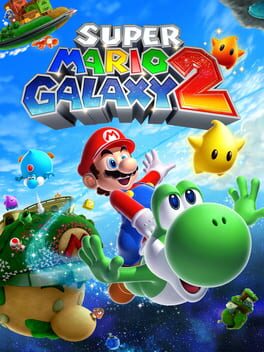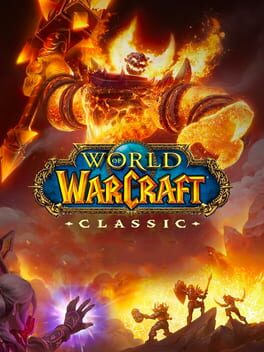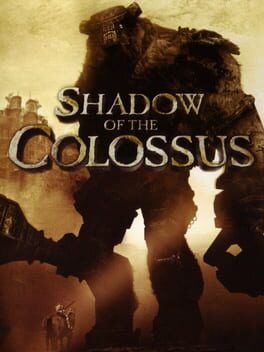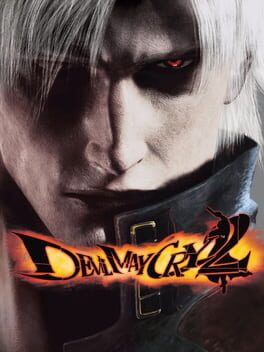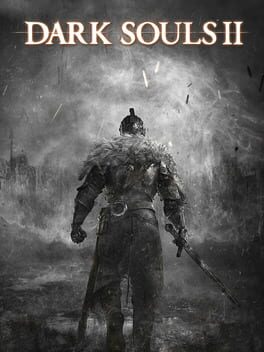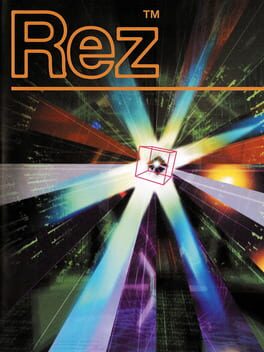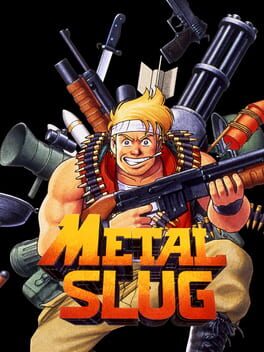antoinebeaumal
BACKER
I have a lot of bias towards this game: I love it and I hate it. By the early 2000s, it was already established that the Zeldas were masterpieces, notably thanks to Ocarina of Time and Majora’s Mask. Not having a Nintendo 64, I didn’t have the chance to play them on their release day. The only Zelda I had played was Link’s Awakening on GameBoy Color in 1998, which I particularly loved. In 1999, I managed to find a copy of Link to the Past at a garage sale for a relatively high price (I believe it was 40€). Unfortunately, the game was in German, but I still tried to play it. I never managed to find the third medallion and remained stuck for a long time, excessively frustrated because I loved everything about the game. But the language barrier made the experience difficult. It was also impossible for me to use the manual (I only bought the cartridge), and I couldn't get my hands on a guide (this was in 1999, I remind you, I didn't have internet at home yet, and printed guides were unavailable at that time).
I think we forget that this kind of game can be particularly opaque and cryptic, even though LTTP is more accessible than the first installment of the saga. The impatient player then has two options to bypass the secrets of this game: the complete guide (and spoil the experience) or the hint for a boost. In this sense, the integration of the NPC who guides you for 30 rupees is a stroke of genius that I would have loved to discover as a child instead of raging on my own, cutting all the bushes in the game (I could have also learned German, what a noob)... Are there still players who will have a similar experience to mine nowadays? I posit here as a hypothesis that the lost player who does not have access to any form of "guidance" has practically disappeared.
Many critics rightly emphasized that LTTP has an absolutely gigantic semi-open world with the particular twist of the change thanks to the mirror. This part is especially remembered because it foreshadows the games to come. But when you really play this game, you forget that LTTP has a half of games close to the dungeon crawling genre, a genre immensely more popular at that time. Japan in particular was marked by the legacy of Wizardry. It's really fascinating to imagine that LTTP (and perhaps a major part of the Zelda series? I'm not an expert, so I'll remain cautious) was at the crossroads between open-world adventure and dungeon crawling. It raises the theoretical question: if the critics hadn't praised the open world of Zelda so much, would the series have become a series of dungeon games? In a parallel Bizarro world, would BOTW have looked like a Lunacid-type game and would Lunacid have been a game that pays homage to the open world? I'm totally digressing.
The game is truly a revolutionary masterpiece. The evolution between LTTP and The Legend of Zelda released 6 years earlier is staggering, even from a technical point of view. Although we live in completely different eras where graphics evolved extremely rapidly, it's amusing to think about this in perspective of a comparison between BOTW and TOTK, which also have almost 6 years apart and are, for all intents and purposes, identical.
Yet despite all the "objective" and qualitative data of this game, well ... I got a little bored in the middle of the game. The alternation between open-world and dungeons becomes a bit repetitive, but fortunately the end is amazing (since the ice dungeon, I would say).
A little annoyance on my part: trying to use online guides only as a last resort (for example, if I'm stuck for more than an hour), I managed relatively well until I got to Trinexx. Impossible for me to figure out how to defeat him on my own. Searching online, I discover that I need the "ice wand." I go to get it and I realize that I can never kill the dragon heads, even with 3 magic bars. I finally realize that my sword is only level 2. I realize that I completely missed the upgrades. Overall, it annoyed me because none of these items are necessary before. This kind of "dead end" is really annoying and discouraging. Without recourse to a guide, I would probably have given up at this point.
Another important point, in terms of narration, LTTP is in line with its predecessors: few dialogues, few memorable secondary characters. The game is more focused on its gameplay and level design while remaining relatively quiet. You either like it or you don't. Even though I struggle with games that are too talkative, I think I might have liked to be more involved in the world of Hyrule. LTTP remains very "gamey": I finished dungeon 5, let's go to dungeon 6. We generally don't care about the story, which is not a bad thing in itself. Add to that the fact that the game is generally very serious. It seems to me that the subsequent games often have more "dorky" moments.
Anyway, I'm glad to have turned this frustrating page of my existence.
I think we forget that this kind of game can be particularly opaque and cryptic, even though LTTP is more accessible than the first installment of the saga. The impatient player then has two options to bypass the secrets of this game: the complete guide (and spoil the experience) or the hint for a boost. In this sense, the integration of the NPC who guides you for 30 rupees is a stroke of genius that I would have loved to discover as a child instead of raging on my own, cutting all the bushes in the game (I could have also learned German, what a noob)... Are there still players who will have a similar experience to mine nowadays? I posit here as a hypothesis that the lost player who does not have access to any form of "guidance" has practically disappeared.
Many critics rightly emphasized that LTTP has an absolutely gigantic semi-open world with the particular twist of the change thanks to the mirror. This part is especially remembered because it foreshadows the games to come. But when you really play this game, you forget that LTTP has a half of games close to the dungeon crawling genre, a genre immensely more popular at that time. Japan in particular was marked by the legacy of Wizardry. It's really fascinating to imagine that LTTP (and perhaps a major part of the Zelda series? I'm not an expert, so I'll remain cautious) was at the crossroads between open-world adventure and dungeon crawling. It raises the theoretical question: if the critics hadn't praised the open world of Zelda so much, would the series have become a series of dungeon games? In a parallel Bizarro world, would BOTW have looked like a Lunacid-type game and would Lunacid have been a game that pays homage to the open world? I'm totally digressing.
The game is truly a revolutionary masterpiece. The evolution between LTTP and The Legend of Zelda released 6 years earlier is staggering, even from a technical point of view. Although we live in completely different eras where graphics evolved extremely rapidly, it's amusing to think about this in perspective of a comparison between BOTW and TOTK, which also have almost 6 years apart and are, for all intents and purposes, identical.
Yet despite all the "objective" and qualitative data of this game, well ... I got a little bored in the middle of the game. The alternation between open-world and dungeons becomes a bit repetitive, but fortunately the end is amazing (since the ice dungeon, I would say).
A little annoyance on my part: trying to use online guides only as a last resort (for example, if I'm stuck for more than an hour), I managed relatively well until I got to Trinexx. Impossible for me to figure out how to defeat him on my own. Searching online, I discover that I need the "ice wand." I go to get it and I realize that I can never kill the dragon heads, even with 3 magic bars. I finally realize that my sword is only level 2. I realize that I completely missed the upgrades. Overall, it annoyed me because none of these items are necessary before. This kind of "dead end" is really annoying and discouraging. Without recourse to a guide, I would probably have given up at this point.
Another important point, in terms of narration, LTTP is in line with its predecessors: few dialogues, few memorable secondary characters. The game is more focused on its gameplay and level design while remaining relatively quiet. You either like it or you don't. Even though I struggle with games that are too talkative, I think I might have liked to be more involved in the world of Hyrule. LTTP remains very "gamey": I finished dungeon 5, let's go to dungeon 6. We generally don't care about the story, which is not a bad thing in itself. Add to that the fact that the game is generally very serious. It seems to me that the subsequent games often have more "dorky" moments.
Anyway, I'm glad to have turned this frustrating page of my existence.
1986
2024 nonsense: I played it on switch with nintendo live and the game lags when there are more than 6 npc on the screen...
With a view to playing all the Zelda games, I unsurprisingly decided to start with the first one. Obviously, the game bears the marks of time, but I found it an exciting step back in time. Much of the Zelda grammar is already present: the heart system, progressive weapon and skill unlocks, shrines, etc...
This game also proves that an adventure needs (almost) no dialogue or cutscenes. It's possible to have an immersive experience through exploration and gameplay alone. It's also possible to guide the player through evasive NPCs without taking them by the hand.
Another interesting element that seems to differ in subsequent Zelda games is that the game is almost a survivalist game, given the hostility of the Hyrule universe. If I'm not mistaken, apart from the first panel and the "heart-restoring fairy", all the panels are death traps. Stand still and Link dies.
The game is also brutally difficult, requiring the player to use the full panoply of items to good effect. Two elements are particularly annoying in my opinion: 1) no "invisible frame" after being hit 2) after dying, no matter how many hearts you have, you go back to 3 hearts. The penalty for the last point seems very heavy to me, and it's not unusual for me to have to leave the sanctuary to go and fill up my pv at the fairy. This sometimes creates pacing problems, but also emphasizes that every damage counts and should be avoided. I really recommend doing all the upgrades you can before going to see Ganon.
I also find that the interface borders on a form of perfect minimalism. Everything is clear, immediate and useful. Right from the start, you can sense Zelda's intentions: to bring the RPG genre to a wider audience by simplifying some of its aspects (complicated UI, lots of text and sometimes very tactical combat) while retaining the desire to explore a wide world, to discover secrets on two levels: a rich open world and enigmatic dungeons. It's also a vision of the RPG that places the player as a constantly active actor (sorry for the redundancy): there are almost no pauses, almost no dialogue, no turn-based combat. In short, a clear break with the paper role-playing game. The granddaddy of console RPGs? shit, this game's almost 40 years old...
With a view to playing all the Zelda games, I unsurprisingly decided to start with the first one. Obviously, the game bears the marks of time, but I found it an exciting step back in time. Much of the Zelda grammar is already present: the heart system, progressive weapon and skill unlocks, shrines, etc...
This game also proves that an adventure needs (almost) no dialogue or cutscenes. It's possible to have an immersive experience through exploration and gameplay alone. It's also possible to guide the player through evasive NPCs without taking them by the hand.
Another interesting element that seems to differ in subsequent Zelda games is that the game is almost a survivalist game, given the hostility of the Hyrule universe. If I'm not mistaken, apart from the first panel and the "heart-restoring fairy", all the panels are death traps. Stand still and Link dies.
The game is also brutally difficult, requiring the player to use the full panoply of items to good effect. Two elements are particularly annoying in my opinion: 1) no "invisible frame" after being hit 2) after dying, no matter how many hearts you have, you go back to 3 hearts. The penalty for the last point seems very heavy to me, and it's not unusual for me to have to leave the sanctuary to go and fill up my pv at the fairy. This sometimes creates pacing problems, but also emphasizes that every damage counts and should be avoided. I really recommend doing all the upgrades you can before going to see Ganon.
I also find that the interface borders on a form of perfect minimalism. Everything is clear, immediate and useful. Right from the start, you can sense Zelda's intentions: to bring the RPG genre to a wider audience by simplifying some of its aspects (complicated UI, lots of text and sometimes very tactical combat) while retaining the desire to explore a wide world, to discover secrets on two levels: a rich open world and enigmatic dungeons. It's also a vision of the RPG that places the player as a constantly active actor (sorry for the redundancy): there are almost no pauses, almost no dialogue, no turn-based combat. In short, a clear break with the paper role-playing game. The granddaddy of console RPGs? shit, this game's almost 40 years old...
2010
As I recently played (and for the first time) Mario Galaxy 1, it's hard for me to consider it anything other than a kind of 'obese DLC' to a game that particularly amazed me. I can understand that the player of 2010 might have been disappointed to only have 'a sequel'. Its status in 2024 is a bit strange: while we can play the 1st on Switch, the 2nd is 'locked' on Wii. It's important to keep in mind that this game was probably designed around the use of Wii remotes and cannot be 'directly' ported to another console. The Mario Galaxy games are thus victims of the 'motion control' trend of their time. However, I found that the controls in these Mario games were truly exceptional, and going back to more limited controls (I'm currently playing 3D World) was experienced as a regression and simplification.
Mario Galaxy 2 therefore lacks the charm of the first time and is a game that relies on the achievements of the first while adding interesting mechanics. I would rather consider Galaxy 1 and 2 as a single, absolutely beautiful long game. The level design is incredible, the music is incredible, the graphics are incredible.
However, some levels in the 2nd are relatively tough in terms of difficulty. Having recently completed Mario Wonder almost in one go without real hitches, I appreciate that a Mario game offers a certain challenge even in its main missions. I find it unfortunate that a game places difficult levels as a kind of additional content that exists alongside the game. Obviously, this is justified on Nintendo's part, which aims to appeal to a very young and inexperienced audience. We'll never have access to this kind of statistic, but I'm willing to bet that a significant percentage of players at the time never finished Galaxy 2, unlike 3D World or Wonder.
There's no reason to miss out on this platformer. Personally, I bought the Wii (€15) + Galaxy 1 and 2 (€20) + an HDMI converter cable (€25, the most expensive investment) for a total of €60. No need to wait for a disappointing HD reissue.
Mario Galaxy 2 therefore lacks the charm of the first time and is a game that relies on the achievements of the first while adding interesting mechanics. I would rather consider Galaxy 1 and 2 as a single, absolutely beautiful long game. The level design is incredible, the music is incredible, the graphics are incredible.
However, some levels in the 2nd are relatively tough in terms of difficulty. Having recently completed Mario Wonder almost in one go without real hitches, I appreciate that a Mario game offers a certain challenge even in its main missions. I find it unfortunate that a game places difficult levels as a kind of additional content that exists alongside the game. Obviously, this is justified on Nintendo's part, which aims to appeal to a very young and inexperienced audience. We'll never have access to this kind of statistic, but I'm willing to bet that a significant percentage of players at the time never finished Galaxy 2, unlike 3D World or Wonder.
There's no reason to miss out on this platformer. Personally, I bought the Wii (€15) + Galaxy 1 and 2 (€20) + an HDMI converter cable (€25, the most expensive investment) for a total of €60. No need to wait for a disappointing HD reissue.
2002
I believe I have rarely been so frustrated and annoyed by a game. Initial struggles with this inverted x-axis camera that cannot be changed. Just imagine for 30 seconds what this implies: my entire internal logic is disrupted. The same grievance I felt with Mario 64: the fact that the camera is sometimes controlled by the player and sometimes by the AI makes the game exasperating, especially in a platformer that requires precision. Either have a fixed camera or give complete control to the player. This hybrid and bastardized system is truly frustrating.
Honestly, when I play Super Mario Sunshine, I question my legitimacy as a gamer. How is it that I am so bad at this game? Is it because I didn't grow up with these 3D games (I have more experience with 2D platformers, FPS, RTS, etc.)? I am unable to get past the halfway point of the game, and the "hidden stages" made me rage in a somewhat ridiculous manner. I think I'll abandon this game for a while and reflect on the meaning of life. Why do I persist to this extent? Super Mario Sunshine has put me in this strange trance. Perhaps it's due to this "Caribbean midi vibes" music. This very relaxing atmosphere is completely at odds with the difficulty of some missions. Like a feverish nap on a beach after a pina colada loaded with rum, this game makes me nauseous.
The "secret stages," in my opinion, are the most challenging but also the most interesting levels. A clear proof that the Mario experience is primarily an abstract experience of shapes and sounds, not an immersion in a pseudo-tangible world like Isle Delfino.
In short, I did not enjoy it, I am unable to finish it, and perhaps I will finish it one day (but I doubt it).
Honestly, when I play Super Mario Sunshine, I question my legitimacy as a gamer. How is it that I am so bad at this game? Is it because I didn't grow up with these 3D games (I have more experience with 2D platformers, FPS, RTS, etc.)? I am unable to get past the halfway point of the game, and the "hidden stages" made me rage in a somewhat ridiculous manner. I think I'll abandon this game for a while and reflect on the meaning of life. Why do I persist to this extent? Super Mario Sunshine has put me in this strange trance. Perhaps it's due to this "Caribbean midi vibes" music. This very relaxing atmosphere is completely at odds with the difficulty of some missions. Like a feverish nap on a beach after a pina colada loaded with rum, this game makes me nauseous.
The "secret stages," in my opinion, are the most challenging but also the most interesting levels. A clear proof that the Mario experience is primarily an abstract experience of shapes and sounds, not an immersion in a pseudo-tangible world like Isle Delfino.
In short, I did not enjoy it, I am unable to finish it, and perhaps I will finish it one day (but I doubt it).
2001
I am not really a "New Game Plus guy." Usually, I finish a game (rarely at 100%) and move on to the next one. I absolutely do not disparage this way of playing; quite the contrary, I have played and replayed the same games for years on end (like the 10,000 hours spent on vanilla WoW, oops). Over time, I have increasingly wanted to explore new games from different eras and styles, not necessarily staying stuck in a comfort zone or the same genre. With Devil May Cry, I discovered another approach, another perspective on playing a game: some games simply become better in New Game Plus.
I still have my physical PS2 copy that I bought almost on the day it was released, thanks to the rave reviews of the time. Without the memory cards from back then, I can’t say how far I got, but I doubt I got past the first boss. If I’m not mistaken, GTA 3 was already announced, and I then spent a good part of the end of 2001 traversing the streets of Liberty City.
The game is simply incredible. Its gothic and cool style is unique and holds up from beginning to end with its very "cheesy" side. It's primarily its combat gameplay that is very addictive: it's both easy to get into but difficult to master.
I never would have thought I would like this very arcade-oriented type of game. As soon as I finished (with difficulty) the game in normal mode, I immediately started again in hard mode, something I almost never do.
Having tried to replay it with my PS2 copy, I highly recommend the HD collection, which fixes almost all the framerate issues.
I still have my physical PS2 copy that I bought almost on the day it was released, thanks to the rave reviews of the time. Without the memory cards from back then, I can’t say how far I got, but I doubt I got past the first boss. If I’m not mistaken, GTA 3 was already announced, and I then spent a good part of the end of 2001 traversing the streets of Liberty City.
The game is simply incredible. Its gothic and cool style is unique and holds up from beginning to end with its very "cheesy" side. It's primarily its combat gameplay that is very addictive: it's both easy to get into but difficult to master.
I never would have thought I would like this very arcade-oriented type of game. As soon as I finished (with difficulty) the game in normal mode, I immediately started again in hard mode, something I almost never do.
Having tried to replay it with my PS2 copy, I highly recommend the HD collection, which fixes almost all the framerate issues.
One of the game's flaws is that once you grasp the trick to weaken the bosses, the execution of said trick is hindered by frustrating controls (having played on PS2 and its 5fps during certain fights surely didn’t help). However, this process of successive failures (frustrating as it is) draws upon hidden reserves within you (some fights can last more than 30 minutes), and finally seeing these colossi fall brings immense joy, not far from the sensations one experiences when defeating a challenging boss in From Software games. The battle in the desert was one of the most epic for me. The end cinematic is simply spectacular.
FR :
Un des défauts du jeu et qu’une fois que le comprend le « trick » pour affaiblir les boss, la réalisation « trick » est entravé par une maniabilité frustrante (d’avoir joué sur PS2 et ses 5fps durant certains combats n’a sûrement pas aidé). Pourtant, ce procédé d’échecs successifs (frustrant) puise en vous des ressources cachées (certaines fight peuvent durer + de 30mn) et de voir d’enfin tuer ces colosses vous procura une joie immense, pas loin des sensations que l’on peut ressentir lorsqu’on tue un boss difficile des jeux From Software.
La bataille du désert a été pour moi une des plus épiques.
La cinématique de fin est tout simplement spectaculaire.
FR :
Un des défauts du jeu et qu’une fois que le comprend le « trick » pour affaiblir les boss, la réalisation « trick » est entravé par une maniabilité frustrante (d’avoir joué sur PS2 et ses 5fps durant certains combats n’a sûrement pas aidé). Pourtant, ce procédé d’échecs successifs (frustrant) puise en vous des ressources cachées (certaines fight peuvent durer + de 30mn) et de voir d’enfin tuer ces colosses vous procura une joie immense, pas loin des sensations que l’on peut ressentir lorsqu’on tue un boss difficile des jeux From Software.
La bataille du désert a été pour moi une des plus épiques.
La cinématique de fin est tout simplement spectaculaire.
2017
2003
2016
This review contains spoilers
We cannot deny that this game quickly establishes a unique horror atmosphere and creates genuinely cinematic scenes. The camera operates like a tracking shot, and it's the impossibility of accessing the boy's vision (looking forward or backward) that creates this sense of agoraphobia. Some scenes are visually gripping, especially the 'dead pig farm' at the beginning and the 'upside-down zombies.' The grand finale, where our solitary character, who has been the prey of the entire environment until now, becomes the predator, is a masterstroke.
No doubt a 'non-gamer reviewer' could write a review as I just did. One could then stamp it with the label 'Masterpiece, 10/10.' In this sense, it's important to note that Inside is an 'artist' game that has received grants supporting artistic production. Inside is a game that draws strength from artistic mediums such as cinema, painting, dystopian novels, and ambient music. The game aims to be an artistic masterpiece that could potentially attract a broader audience than the limited 'puzzle-platformer' audience. For gamers who are enthusiasts of this genre, Inside may be too simple, too short, and too repetitive. I personally found it less interesting than Limbo (its predecessor) in terms of gameplay.
However, I believe it's essential not to impose expectations that Inside cannot meet. Inside manages to be strange, surprising, but above all, accessible. It's the kind of game that elevates video games to the status of a medium with artistic potential. It could also be the first game for a 'non-gamer.' So, let's not dismiss it, shall we?
FR : On ne peut nier que ce jeu sait rapidement construire une ambiance horrifique unique et créer des scènes véritablement cinématographiques. La caméra fonctionne comme un traveling et c’est l’impossibilité d’accéder à la vision du garçon (voir en avant ou en arrière) qui créer ce sentiment d'agoraphobie. Certaines scènes sont picturalement prenantes, je pense notamment à « ferme aux cochons morts » du début et aux « zombies pendus à l’envers ». Le grand final où notre personnage solitaire, qui est, jusque-là, la proie de tout l’environnement devient le prédateur est un coup de maitre.
Pas de doute qu’un « non-gamer reviewer » pourrait écrire une critique comme je viens de le faire. On y collerait alors le tampon « Masterpiece, 10/10». En ce sens il est important de noter que Inside est un jeu « d’artiste » qui a touché des subventions qui soutiennent la production artistique. Inside est un jeu qui emprunte sa force à des médiums artistiques tel que le cinéma, la peinture, le roman dystopique et la musique ambient. Le jeu se veut une épure artistique qui pourrait potentiellement attirer un public plus large que le public restreint des « puzzle plate-former ». Pour ces gamers amateurs du genre, Inside est trop simple, trop court, trop répétitif. J’ai personnellement trouvé moins intéressant que Limbo (son prédécesseur) niveau gameplay.
Je pense toutefois qu’il ne faut pas plaquer des attentes qu’Inside ne peut répondre. Inside réussit à être étrange, surprenant, mais surtout accessible. Typiquement le genre de jeu qui d’élever le jeu vidéo au rang de médium à potentialité artistique. Cela pourrait aussi être le premier jeu pour un-e « non-gamer ». Alors on ne va pas cracher dessus, non ?
No doubt a 'non-gamer reviewer' could write a review as I just did. One could then stamp it with the label 'Masterpiece, 10/10.' In this sense, it's important to note that Inside is an 'artist' game that has received grants supporting artistic production. Inside is a game that draws strength from artistic mediums such as cinema, painting, dystopian novels, and ambient music. The game aims to be an artistic masterpiece that could potentially attract a broader audience than the limited 'puzzle-platformer' audience. For gamers who are enthusiasts of this genre, Inside may be too simple, too short, and too repetitive. I personally found it less interesting than Limbo (its predecessor) in terms of gameplay.
However, I believe it's essential not to impose expectations that Inside cannot meet. Inside manages to be strange, surprising, but above all, accessible. It's the kind of game that elevates video games to the status of a medium with artistic potential. It could also be the first game for a 'non-gamer.' So, let's not dismiss it, shall we?
FR : On ne peut nier que ce jeu sait rapidement construire une ambiance horrifique unique et créer des scènes véritablement cinématographiques. La caméra fonctionne comme un traveling et c’est l’impossibilité d’accéder à la vision du garçon (voir en avant ou en arrière) qui créer ce sentiment d'agoraphobie. Certaines scènes sont picturalement prenantes, je pense notamment à « ferme aux cochons morts » du début et aux « zombies pendus à l’envers ». Le grand final où notre personnage solitaire, qui est, jusque-là, la proie de tout l’environnement devient le prédateur est un coup de maitre.
Pas de doute qu’un « non-gamer reviewer » pourrait écrire une critique comme je viens de le faire. On y collerait alors le tampon « Masterpiece, 10/10». En ce sens il est important de noter que Inside est un jeu « d’artiste » qui a touché des subventions qui soutiennent la production artistique. Inside est un jeu qui emprunte sa force à des médiums artistiques tel que le cinéma, la peinture, le roman dystopique et la musique ambient. Le jeu se veut une épure artistique qui pourrait potentiellement attirer un public plus large que le public restreint des « puzzle plate-former ». Pour ces gamers amateurs du genre, Inside est trop simple, trop court, trop répétitif. J’ai personnellement trouvé moins intéressant que Limbo (son prédécesseur) niveau gameplay.
Je pense toutefois qu’il ne faut pas plaquer des attentes qu’Inside ne peut répondre. Inside réussit à être étrange, surprenant, mais surtout accessible. Typiquement le genre de jeu qui d’élever le jeu vidéo au rang de médium à potentialité artistique. Cela pourrait aussi être le premier jeu pour un-e « non-gamer ». Alors on ne va pas cracher dessus, non ?
2014
2001
STAY ALERT – STAY ALERT - STAY ALERT – STAY ALERT - STAY ALERT – STAY ALERT –
BOOM TSSSS - BOOM TSSSS - BOOM TSSSS - BOOM TSSSS - BOOM TSSSS - BOOM TSSSS -
When I was a teenager, I used to see this game on the shelves of game shops and think to myself, 'Who would want to play that? It looks like an old, ugly arcade game.' How foolish I was.
Rez has so much style. It's actually quite difficult to describe because it's both a geometric and rhythmic experience. This game encapsulates a certain idea of 2000s techno music. Musically, it falls between trance, synthetic acid house, and hard tech. It's important to note that the artists who created the music for this game (Ken Ishii and Joujouka, at least) are recognized electronic music producers who were important in the 1990s and still are today. One wonders if the game was created from the music or vice versa.
The level design remains a mystery to me: it feels like constantly diving into a neon fractal in a world that defies all physics. Level 4 is particularly epic. The game operates solely on its flow, linking a certain form of visual abstraction that perfectly syncs with the electronic music played as a mix, not track by track. The game can truly take you to an 'out-of-body' state that only a nightclub with lasers, strobe lights, and smoke machines can evoke.
You can still feel Sega's total mastery over the arcade game genre.
BOOM TSSSS - BOOM TSSSS - BOOM TSSSS - BOOM TSSSS - BOOM TSSSS - BOOM TSSSS -
When I was a teenager, I used to see this game on the shelves of game shops and think to myself, 'Who would want to play that? It looks like an old, ugly arcade game.' How foolish I was.
Rez has so much style. It's actually quite difficult to describe because it's both a geometric and rhythmic experience. This game encapsulates a certain idea of 2000s techno music. Musically, it falls between trance, synthetic acid house, and hard tech. It's important to note that the artists who created the music for this game (Ken Ishii and Joujouka, at least) are recognized electronic music producers who were important in the 1990s and still are today. One wonders if the game was created from the music or vice versa.
The level design remains a mystery to me: it feels like constantly diving into a neon fractal in a world that defies all physics. Level 4 is particularly epic. The game operates solely on its flow, linking a certain form of visual abstraction that perfectly syncs with the electronic music played as a mix, not track by track. The game can truly take you to an 'out-of-body' state that only a nightclub with lasers, strobe lights, and smoke machines can evoke.
You can still feel Sega's total mastery over the arcade game genre.
2007
I must admit that I was completely reluctant to use the Wii Remote. I also confess that attaching a Wii sensor to a 42-inch LG OLED screen with tape (yes, screens are now too thin to simply place the sensor on the screen) in 2024 is a unique and anachronistic experience. After finishing the game, I find that the Wii Remote actually encourages multitasking: moving Mario with one hand and grabbing stars with the other. The experience is truly unique, and I wonder how this game will be preserved in the future outside of its original support. I imagine the Switch version uses the second stick to mimic the Wii Remote aiming. The experience must inevitably be frustrating and awkward.
Massive crush. I've rarely been so engrossed in a 3D platformer. After my unsuccessful attempts with Mario 64 and Mario Sunshine, I am completely convinced by the controls. Big shout out to the developers responsible for the camera movements. Such mastery is truly impressive, especially in a game that defies gravity so much. Even if it comes at the expense of open worlds (and thus a more linear game), I much prefer scripted and refined camera movements like those in Mario Galaxy. I never felt the need to reorient the camera.
I think everything has already been said about Galaxy. I remain overall speechless at the creativity of the levels; the game always seems to renew itself without ever falling into repetition. Just majestic.
Massive crush. I've rarely been so engrossed in a 3D platformer. After my unsuccessful attempts with Mario 64 and Mario Sunshine, I am completely convinced by the controls. Big shout out to the developers responsible for the camera movements. Such mastery is truly impressive, especially in a game that defies gravity so much. Even if it comes at the expense of open worlds (and thus a more linear game), I much prefer scripted and refined camera movements like those in Mario Galaxy. I never felt the need to reorient the camera.
I think everything has already been said about Galaxy. I remain overall speechless at the creativity of the levels; the game always seems to renew itself without ever falling into repetition. Just majestic.
Warning : spoilers
What happens to Edith Finches = 2 hours of wow moments.
What makes a linear narrative game able to remain a game and not just a narrative movie? I believe this game brings interesting propositions.
These are essentially random thoughts.
- Great creativity in the interactions between the character, the environment, and the text.
- Breaking the laws of character movement.
- A whimsical architecture made up of accumulations of rooms and secret passages.
- Playing with a form of media history: glasses-photos, the unfolding book, comics, photography, the flip-book, etc.
- The swing scene: just incredible. It creates tension in a sequence that only aims to tell a short flashback. Much more interesting than a QTE sequence in most games of this style.
- A lot of humor too: references to Halloween the movie. Walter's radio music styles changing over the years. The "Pulp comic" moment as well.
- Relatively simple story: a girl seeking to understand the mysteries of her family. When you see the family tree, you might think it's heading towards something relatively boring, like reliving all the stories of the family. Yet, it's the game's mastery to make the visit to this family album interesting.
- The "Lewis moment" is a strong moment (if not the strongest) of the game. I don't think I've played many games where each hand controls a different part of the screen. You are truly immersed in Lewis's delirious thoughts. Anyone who has done a repetitive job can empathize with this character.
- Duration: 2 hours is more than enough.
- LEWIS SUCH a GAMER WITH HIS WASD KEYBOARD and double screens.
What happens to Edith Finches = 2 hours of wow moments.
What makes a linear narrative game able to remain a game and not just a narrative movie? I believe this game brings interesting propositions.
These are essentially random thoughts.
- Great creativity in the interactions between the character, the environment, and the text.
- Breaking the laws of character movement.
- A whimsical architecture made up of accumulations of rooms and secret passages.
- Playing with a form of media history: glasses-photos, the unfolding book, comics, photography, the flip-book, etc.
- The swing scene: just incredible. It creates tension in a sequence that only aims to tell a short flashback. Much more interesting than a QTE sequence in most games of this style.
- A lot of humor too: references to Halloween the movie. Walter's radio music styles changing over the years. The "Pulp comic" moment as well.
- Relatively simple story: a girl seeking to understand the mysteries of her family. When you see the family tree, you might think it's heading towards something relatively boring, like reliving all the stories of the family. Yet, it's the game's mastery to make the visit to this family album interesting.
- The "Lewis moment" is a strong moment (if not the strongest) of the game. I don't think I've played many games where each hand controls a different part of the screen. You are truly immersed in Lewis's delirious thoughts. Anyone who has done a repetitive job can empathize with this character.
- Duration: 2 hours is more than enough.
- LEWIS SUCH a GAMER WITH HIS WASD KEYBOARD and double screens.
1996
I bought a kind of mega bundle of Neo Geo games thinking I’d dive a bit into the world of SNK & co. arcade games. I decided to start with the first Metal Slug, having played it a bit with a friend when I was young in an arcade. The result: I finished the game 5 times in a day and a half and became totally obsessed with it. I play it like a sort of Rogue-lite or a Balatro: each run lasts 30 minutes. My goal is to finish the game with a single credit. I am still very, very far from achieving that.


